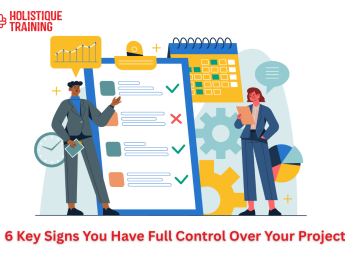- Table of Contents
- What Is ROI in Marketing?
- How Do You Calculate and Measure Marketing ROI?
- 1- Set Clear Goals
- 2- Track Your Marketing Expenses
- 3- Assign a Monetary Value
- Calculate ROI
- How to Increase Your Marketing ROI
- 1- Target the Right Audience
- 2- Implement Data-Driven Marketing
- 3- Optimise Conversion Rates
- 4- Embrace Content Marketing
- Leverage Social Media
- How Does Strategic Marketing Help Increase ROI?
- Clear Focus and Prioritisation
- Competitive Advantage
- Targeted Messaging
- Efficient Resource Allocation
- Continuous Improvement
- B2B vs. B2C Marketing: Maximising ROI Strategies
- B2B Marketing Strategies
- B2C Marketing Strategies
- Cross-Channel Integration
- Analytics and Data-Driven Decisions
- Emerging Trends in AI-Powered Marketing
- 1. Personalised Recommendations
- 2. Predictive Analytics
- 3. Automated Content Creation
- 4. Chatbots and Virtual Assistants
- 5. Marketing Attribution Modelling
- Conclusion
Introduction
Effective marketing is not just about generating buzz or creating eye-catching campaigns; it's about driving tangible results and maximising your return on investment (ROI). In a business landscape where every dollar counts, understanding the power of strategic marketing becomes paramount. By adopting a strategic approach, companies can unlock the potential to enhance their ROI and propel their growth to new heights. In this blog post, we will delve into the concept of ROI in marketing, explore the methodologies to calculate and measure it and uncover how strategic marketing can fuel your ROI optimisation.
What Is ROI in Marketing?
Return on Investment (ROI) is a performance metric used to evaluate the profitability of an investment relative to its cost. In marketing, ROI measures the effectiveness of your marketing initiatives by comparing the revenue generated or desired outcome against the cost of those activities. It provides valuable insights into the success of your marketing campaigns and helps you allocate resources wisely.
How Do You Calculate and Measure Marketing ROI?
Calculating and measuring marketing ROI requires a systematic approach to gathering data and evaluating the outcomes of your marketing efforts. Here are the key steps to follow:
1- Set Clear Goals
Defining specific and measurable marketing objectives is the foundational step in calculating ROI. These goals should be closely aligned with your overall business objectives. Whether the aim is to increase sales, generate leads, enhance brand awareness, or achieve other specific outcomes, having clear goals provides a framework for tracking and measuring the impact of your marketing initiatives.
2- Track Your Marketing Expenses
Accurate tracking of marketing expenses is crucial for a precise ROI calculation. These expenses encompass a wide range, including advertising costs, content creation expenses, design costs, technology expenditures, personnel salaries, and any other relevant costs incurred during your marketing campaigns. Utilising sophisticated financial tools or dedicated marketing software can streamline this tracking process, ensuring that no cost is overlooked.
3- Assign a Monetary Value
Once you have defined your goals and tracked your expenses, the next step is to assign a monetary value to the desired outcome of your marketing efforts. For example, if you aim to increase sales, you would assign a specific financial value to each sale generated through your marketing activities. This step involves translating qualitative outcomes into quantitative terms, providing a clear basis for calculating ROI.
Calculate ROI
Once you have the data on your marketing expenses and the monetary value of your desired outcome, you can calculate ROI using the following formula:
ROI = (Revenue - Cost of Marketing) / Cost of Marketing * 100
Breaking it down:
Revenue: This includes the income generated from your marketing activities. It could be the total sales resulting from a campaign, the monetary value of leads generated, or any other measurable outcome.
Cost of Marketing: This encompasses all expenses associated with your marketing efforts, as accurately tracked in the second step.
By plugging in the values, you get a percentage that represents the return on investment. A positive percentage indicates a profit, while a negative one signifies a loss.
This formula provides a comprehensive view of the efficiency of your marketing strategies. If your ROI is positive, it means that for every dollar spent on marketing, you generate more than a dollar in return. If it's negative, it indicates that your marketing efforts are not yielding the desired results, prompting a reevaluation of your strategy.
Additionally, creating a visual representation of your ROI data through charts or graphs can facilitate a clearer understanding. Consider using a table to present data on specific campaigns, outlining their associated costs, revenues, and calculated ROI. This table could be particularly beneficial for businesses running multiple concurrent campaigns, helping in the identification of high-performing and underperforming initiatives.
In summary, an effective ROI calculation involves setting clear goals, meticulous tracking of expenses, assigning monetary values, and applying a robust formula to assess the efficiency of marketing efforts. This analytical approach empowers businesses to make informed decisions, allocate resources judiciously, and continually refine their strategies for optimal ROI.
How to Increase Your Marketing ROI
Now that you understand how to calculate and measure marketing ROI, let's delve into some actionable strategies to help you increase your ROI and optimise your marketing efforts:
1- Target the Right Audience
Identifying and understanding your target audience is foundational to increasing ROI. By creating buyer personas and thoroughly researching your market, you can tailor your marketing messages and campaigns to resonate with your audience's specific needs and preferences. This personalised approach increases the effectiveness of your marketing initiatives and minimises wasted resources on reaching an uninterested audience.
Moreover, segmentation techniques allow you to divide your audience into smaller, more homogenous groups. This enables you to craft highly targeted campaigns, addressing the unique pain points and interests of each segment. For instance, if you offer a diverse range of products or services, segmenting your audience based on their preferences ensures they receive relevant content and offers.
2- Implement Data-Driven Marketing
Leveraging data analytics and marketing automation tools is paramount to increasing ROI. Platforms like ActiveCampaign, Hubspot, and Zapier provide valuable insights into customer behaviour, allowing you to make informed decisions. By understanding which marketing channels, campaigns, or tactics are generating the highest ROI, you can allocate your resources more effectively.
Data-driven marketing involves the continuous analysis of customer data. It enables you to identify patterns, preferences, and trends, empowering you to make real-time adjustments to your strategies. For example, if data reveals that a particular social media platform is driving more engagement and conversions, you can allocate more resources to that specific channel.
Consider implementing an analytics dashboard that consolidates key metrics, providing a comprehensive overview of your marketing performance. This could include metrics such as customer acquisition cost (CAC), customer lifetime value (CLV), and conversion rates across various channels.
3- Optimise Conversion Rates
Enhancing conversion rates at every stage of the customer journey directly leads to increasing ROI. To achieve this:
Improve Website User Experience
A user-friendly website that is easy to navigate can significantly impact conversion rates. Conduct usability testing, analyse user feedback, and streamline the checkout process to minimise friction.
Create Compelling Call-to-Actions (CTAs)
The language and design of your CTAs play a crucial role in driving conversions. Conduct A/B testing on different CTA variations to identify the most effective ones.
Conduct A/B Testing
This involves comparing two versions of a webpage or campaign to determine which performs better. By testing different elements, such as headlines, images, or even entire landing pages, you can refine your approach and boost conversion rates.
Implementing these strategies and monitoring the results through an A/B testing log, for instance, allows you to continually optimise for better conversion rates, ultimately increasing your ROI.
4- Embrace Content Marketing
A comprehensive content marketing strategy significantly increases ROI by attracting, engaging, and retaining customers. Quality, relevant content establishes your brand as an authority and fosters a sense of loyalty among your audience.
Consider creating a content calendar that outlines the topics, formats, and distribution channels for your content. Track the performance of each piece of content, including metrics like engagement, shares, and conversions. This ongoing analysis informs future content creation, ensuring you consistently deliver material that resonates with your audience and drives ROI.
Leverage Social Media
Social media platforms offer unparalleled opportunities to connect with your audience, build brand awareness, and drive engagement. To maximise ROI through social media:
Develop a Targeted Strategy
Tailor your approach to each platform, considering your target audience's unique strengths and demographics on each.
Utilise Paid Advertising
Platforms like Facebook and Instagram offer robust advertising options. Invest in targeted ad campaigns to reach specific demographics, increasing the likelihood of conversions.
Monitor and Adjust
Analyse your social media efforts' performance regularly. Track metrics such as reach, engagement, and conversion rates. Adjust your strategy based on the platforms and content types driving the best results.
By implementing these strategies and continually refining your approach based on data-driven insights, you can significantly increase your marketing ROI and drive sustainable business growth.
How Does Strategic Marketing Help Increase ROI?
Strategic marketing plays a vital role in maximising your ROI by aligning your marketing efforts with your overall business objectives. Here's how strategic marketing can help increase your ROI:
Clear Focus and Prioritisation
A strategic marketing approach ensures that your efforts are focused on the most impactful initiatives. Rather than spreading resources thin across various channels and campaigns, strategic marketing involves identifying and prioritising activities that are most likely to yield high returns. This focus allows for the efficient allocation of time, budget, and manpower, resulting in a more streamlined and effective marketing strategy.
Consider implementing a prioritisation matrix that evaluates marketing initiatives based on factors such as potential ROI, alignment with business goals, and resource requirements. This matrix aids in making informed decisions about where to allocate resources for maximum impact.
Competitive Advantage
Strategic marketing enables you to differentiate your brand from competitors, ultimately leading to a competitive advantage that positively influences ROI. You can attract more customers and foster brand loyalty by identifying and capitalising on your unique selling propositions (USPs) and market opportunities.
Conduct a thorough analysis of your competitors, identifying gaps in the market and areas where your brand can stand out. Utilise this information to position your products or services uniquely. For instance, if competitors are focused on price, you might differentiate by emphasising superior quality, customer service, or innovative features.
Create a SWOT analysis (Strengths, Weaknesses, Opportunities, Threats) to identify internal and external factors affecting your brand's position in the market. This analysis informs strategic decisions, allowing you to leverage strengths, address weaknesses, capitalise on opportunities, and mitigate threats.
Targeted Messaging
Strategic marketing involves deeply understanding your target audience's needs, pain points, and motivations. By crafting targeted messaging that resonates with your audience, you can enhance customer engagement, increase conversion rates, and ultimately boost ROI.
Developing buyer personas is a fundamental step in this process. These detailed representations of your ideal customers include demographic information, preferences, and behaviours. Tailor your messaging to address the specific needs and challenges outlined in these personas.
Create a messaging framework that aligns with different stages of the customer journey. For example, your messaging to potential customers may focus on addressing pain points and building awareness, while messaging to existing customers could emphasise loyalty programmes and upselling opportunities.
Efficient Resource Allocation
Implementing a strategic marketing plan can help you allocate your resources more efficiently. This involves investing in the most effective marketing channels, campaigns, and tactics that have proven to generate a higher ROI while minimising wasted resources on less effective initiatives.
Conduct a thorough analysis of past marketing performance, identifying which channels and campaigns have consistently delivered positive results. Allocate a larger portion of your budget and efforts to these high-performing areas. Utilise tools like marketing analytics platforms to track and measure the effectiveness of each channel over time.
Consider creating a resource allocation matrix that outlines the budget, time, and personnel allocated to each marketing initiative. Regularly review and adjust this matrix based on performance data to ensure that resources are continually directed toward activities with the highest ROI potential.
Continuous Improvement
Strategic marketing emphasises the importance of continuous evaluation and improvement. By regularly analysing your marketing performance and adjusting your strategies based on the insights gained, you can optimise your marketing efforts and continually increase your ROI.
Implement a feedback loop that includes regular performance reviews, customer feedback analysis, and competitive benchmarking. This ongoing evaluation provides valuable data for refining and enhancing your marketing strategies.
Leverage A/B testing to experiment with different approaches and determine the most effective strategies. This iterative testing process allows you to fine-tune your messaging, design, and tactics based on real-time data, ensuring that your marketing efforts are always evolving for maximum impact.
Incorporate key performance indicators (KPIs) into your marketing strategy to measure success and identify areas for improvement. KPIs may include conversion rates, customer acquisition cost, customer lifetime value, and return on ad spend.
KPI | Description | Measurement Focus |
Conversion Rate | Percentage of visitors converted to customers | Sales and lead generation |
Customer Acquisition Cost (CAC) | Cost to acquire a new customer | Efficiency in acquisition |
Customer Lifetime Value (CLV) | Predicted revenue from a customer throughout their lifecycle | Long-term value generation |
Return on Ad Spend (ROAS) | Revenue generated for every dollar spent on advertising | Advertising effectiveness |
Social Media Engagement | Likes, shares, and comments on social media platforms | Audience interaction and brand reach |
Table 1: Strategic Marketing KPIs
In summary, strategic marketing is a dynamic and iterative process that directly contributes to increased ROI. By maintaining a clear focus, gaining a competitive advantage, crafting targeted messaging, efficiently allocating resources, and embracing continuous improvement, businesses can optimise their marketing strategies for sustained growth and success.
B2B vs. B2C Marketing: Maximising ROI Strategies
In the dynamic landscape of marketing, the approach to maximising Return on Investment (ROI) significantly differs between Business-to-Business (B2B) and Business-to-Consumer (B2C) environments. Each domain comes with its unique challenges, target audiences, and strategies. Let's explore how businesses can tailor their marketing efforts to maximise ROI in both B2B and B2C scenarios.
B2B Marketing Strategies
a. Account-Based Marketing (ABM)
In B2B marketing, where the sales cycle is typically longer and involves multiple decision-makers, Account-Based Marketing (ABM) is a powerful strategy. ABM focuses on personalised campaigns directed at high-value accounts. By tailoring messages to the specific needs of individual businesses, marketers can enhance engagement and increase the likelihood of conversion.
b. Thought Leadership Content
Establishing authority in the industry is crucial for B2B marketers. Creating thought leadership content, such as whitepapers, case studies, and webinars, positions your brand as an expert. This not only attracts potential clients but also fosters trust, which is essential in B2B relationships. Thought leadership content contributes to long-term relationship building, ultimately positively impacting ROI.
c. Relationship Building
Building and nurturing relationships is a cornerstone of B2B marketing. Personalised communication, networking events, and ongoing engagement are key. CRM (Customer Relationship Management) tools play a vital role in managing and analysing interactions, ensuring that the relationship-building efforts are strategic and result-oriented.
B2C Marketing Strategies
a. Emotional Branding
In B2C marketing, emotions often drive purchasing decisions. Creating emotional connections with consumers through branding is a powerful strategy. Storytelling, impactful visuals, and aligning your brand with values that resonate with your target audience can enhance brand loyalty and contribute to increased ROI.
b. Influencer Marketing
Leveraging influencers is a trend that has gained immense popularity in B2C marketing. Partnering with influencers who have a significant following among your target demographic can amplify your brand's reach and credibility. This strategy is particularly effective in sectors such as fashion, beauty, and lifestyle.
c. User-Generated Content (UGC)
Encouraging customers to generate content related to your products or services is a cost-effective strategy in B2C marketing. User-generated content (UGC), such as reviews, testimonials, and social media posts, serves as authentic endorsements. Potential customers often trust the opinions of their peers, contributing to increased conversions and, consequently, improved ROI.
Cross-Channel Integration
Whether your focus is B2B or B2C, integrating marketing efforts across multiple channels is crucial for maximising ROI. A seamless, omnichannel experience ensures your brand remains consistent and accessible across various touchpoints.
Investing in marketing automation tools that facilitate cross-channel integration can streamline processes, improve efficiency, and provide a holistic view of customer interactions. Understanding how different channels contribute to the customer journey allows for more informed decision-making and resource allocation, ultimately positively impacting ROI.
Analytics and Data-Driven Decisions
Robust analytics and data-driven decision-making benefit both B2B and B2C marketers. Analysing customer behaviour, measuring campaign effectiveness, and gaining insights into the ROI of different channels are essential practices.
Invest in advanced analytics tools that provide actionable insights. Regularly review key performance indicators (KPIs) specific to your industry and adjust strategies based on data-driven findings. This iterative approach ensures that marketing efforts remain aligned with business goals and contribute to optimal ROI.
In short, while marketing fundamentals apply to both B2B and B2C scenarios, tailoring strategies to the unique characteristics of each environment is crucial for maximising ROI. Whether you are building relationships with businesses or connecting with individual consumers, understanding your target audience's specific needs, preferences, and decision-making processes is key to achieving sustained success and a higher return on investment.
Emerging Trends in AI-Powered Marketing
Integrating artificial intelligence (AI) in marketing has become a transformative force as technology advances. AI-powered marketing tools are reshaping strategies and enhancing the efficiency of campaigns. Here are some key emerging trends in AI-powered marketing:
1. Personalised Recommendations
AI algorithms have revolutionised how businesses recommend products or content to their audience. Machine learning algorithms analyse user behaviour, preferences, and past interactions to deliver highly personalised recommendations. This not only improves user experience but also significantly increases the likelihood of conversions.
Consider implementing AI-driven recommendation engines on your e-commerce platform or content distribution channels. These engines continuously learn from user interactions, ensuring that recommendations become increasingly accurate over time. This personalised approach enhances customer satisfaction and contributes to higher conversion rates and, subsequently, improved ROI.
2. Predictive Analytics
Predictive analytics powered by AI allows marketers to anticipate future trends and customer behaviours. By analysing historical data and identifying patterns, AI algorithms can make accurate predictions about which marketing strategies are likely to be most effective. This empowers businesses to proactively adjust their campaigns, allocating resources to initiatives with the highest predicted ROI.
Invest in AI-powered predictive analytics tools that can integrate with your existing marketing platforms. These tools can provide valuable insights into customer preferences, helping you tailor your messaging, target the right audience, and optimise your overall marketing strategy for improved ROI.
3. Automated Content Creation
AI is increasingly being used to automate content creation processes. Natural Language Processing (NLP) algorithms can generate high-quality, engaging content by understanding context, tone, and audience preferences. This not only speeds up content production but also ensures consistency and relevancy across various channels.
Explore AI-powered content creation tools that leverage NLP and machine learning. These tools can assist in generating blog posts, social media content, and even email campaigns. By automating repetitive tasks, your marketing team can focus on more strategic activities, leading to increased efficiency and potentially higher ROI.
4. Chatbots and Virtual Assistants
Chatbots and virtual assistants powered by AI are revolutionising customer interactions. These intelligent systems can respond instantly to customer queries, guide users through the sales funnel, and even personalise recommendations based on individual preferences.
Consider integrating AI-driven chatbots into your website or messaging platforms. These chatbots can handle routine customer inquiries, freeing up human resources for more complex tasks. The instantaneous and personalised nature of AI-driven interactions contributes to improved customer satisfaction and, ultimately, a positive impact on ROI.
5. Marketing Attribution Modelling
AI is crucial in refining marketing attribution models. Traditional models often struggle to attribute conversions to specific touchpoints along the customer journey accurately. AI algorithms, however, can analyse vast amounts of data to provide a more accurate representation of how various marketing channels contribute to conversions.
Explore AI-powered attribution modelling tools to gain a deeper understanding of the customer journey. By attributing value to each touchpoint, you can allocate resources more effectively, focusing on the channels and campaigns with the greatest ROI impact.
Incorporating these AI-powered marketing trends into your strategy positions your business at the forefront of innovation. As technology evolves, staying abreast of these trends ensures that your marketing efforts remain efficient, effective, and, most importantly, optimised for a higher return on investment.
Conclusion
Maximising your ROI in marketing requires a data-driven and strategic approach. By understanding the concept of ROI, implementing effective measurement techniques, and adopting strategic marketing practices, you can enhance your marketing effectiveness, drive growth, and achieve a higher return on investment. Embrace the power of strategic marketing and take your business to new heights of success. Remember, the right strategy combined with a clear focus on ROI can be the game-changer your business needs. And if you're looking to delve deeper into the world of strategic marketing, consider enrolling in our comprehensive course, ‘Mastering Business to Business Marketing,’ to gain the knowledge and skills needed to excel in this dynamic field.























